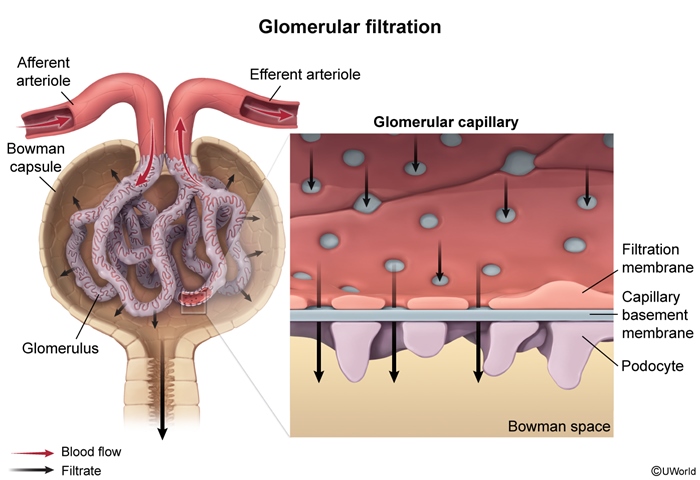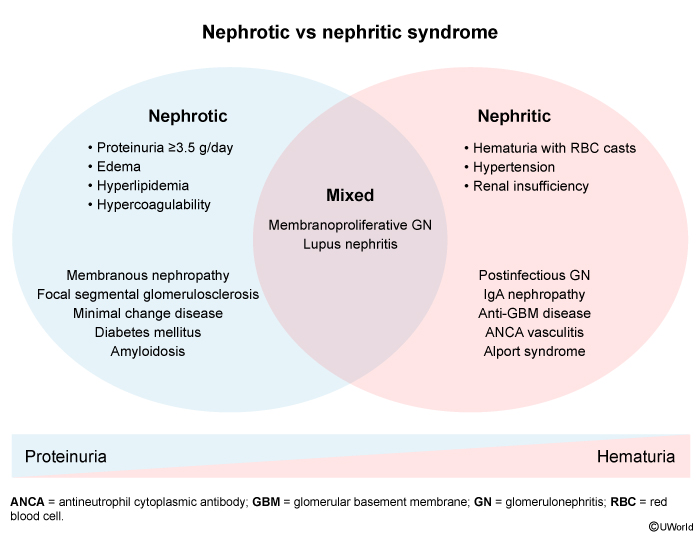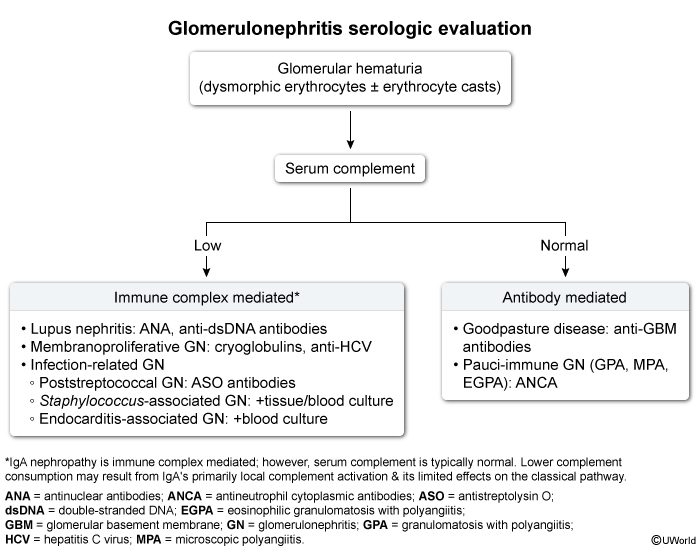Glomerular Disorders: An Overview Of Nephritic And Nephrotic Syndrome
Article Sections
Introduction
The kidney contains millions of filtration units known as glomeruli, which are networks of capillaries supported by a structural matrix containing mesangial cells. Glomerular capillaries are lined by endothelial cells and the glomerular basement membrane (GBM). Together with specialized epithelial cells called podocytes, this network controls the passage of substances from the blood into the urinary (Bowman) space (ie, glomerular filtration (Figure 1). Damage to these glomerular structures can result in a variety of clinical manifestations ranging from subtle urinary changes to life-threatening kidney failure.
Pathophysiology
Mild forms of glomerular damage interfere with the normal filtration barrier and can cause isolated microscopic hematuria and/or proteinuria; this condition often presents without symptoms but warrants investigation to prevent progression. More substantial glomerular injury can manifest as nephritic syndrome (inflammatory) or nephrotic syndrome (noninflammatory).
Continue Learning with UWorld
Get the full Glomerular Disorders: An Overview Of Nephritic And Nephrotic Syndrome article plus rich visuals, real-world cases, and in-depth insights from medical experts, all available through the UWorld Medical Library.
Figures


